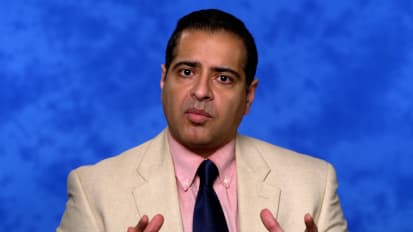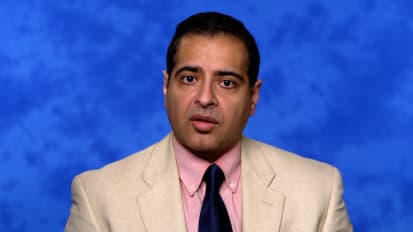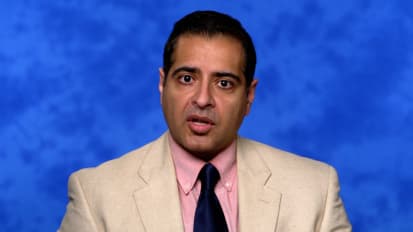Laxman Bahroo, DO, FAAN

Associate Professor, Department of Neurology
Georgetown University Medical Center
Vice Chair of Finance
Director, Residency Program
Director, Botulinum Toxin Clinic
Associate Professor of Neurology
Medstar Georgetown University Hospital
Washington, D.C.
Can you please provide us with a brief summary of what you plan to cover in today’s CME program focusing on new advances in CD/LD-based treatment of PD, including the scored, fractionable dosing formulation of CD/LD?
Can you provide our neurological and movement disorder specialists with a broad view of critical issues and unmet therapeutic needs for Parkinson’s Disease (PD)?
How does the neurologist, geriatrician, or movement disorder specialist confirm the diagnosis of Parkinson’s Disease as a prelude or trigger to beginning pharmacologic therapy? What are the pathognomonic features of this disease state?
What new diagnostic modalities—including scans and skin biopsy—are available to support the clinical/motor findings that are characteristic of persons with Parkinson’s Disease?
Once a patient is confirmed to have Parkinson’s Disease, what are the evidence- and guideline-based approaches to initiating pharmacotherapy and, sequencing therapy in cases that are refractory to initial therapy or that do not respond optimally?
Can you be specific about the challenges encountered in persons who have been treated with a fixed dose of carbidopa/levodopa (CD/LD) and begin to show signs of therapeutic resistance, manifested by increasing “Off times” and/or suboptimal response?
How do you manage the challenges that accompany the narrowing therapeutic window for CD/LD? Given the evolving therapeutic toolkit—including the availability of fractionated CD/LD dosing formulation—what options go through your mind at this point?
What are the currently available dosing formulations of CD/LD, and what potential advance in PD treatment has been made possible with the availability of a CD/LD fractionable dosing formulation (Dhivy®)?
Despite the plethora of CD/LD formulations available to address the increasing “off time” that accompanies progressive PD, what are the advantages and indications of the newly FDA-approved CD/LD scored, fractionable dosing formulation?
Can you provide an example where the foundational approaches/formulations of CD/LD have not been satisfactory due to increasing “off time;” and, how you might deploy the scored CD/LD fractionable dosing formulation to address this clinical challenge?
What medication compliance factors do you stress with patients who are on CD/LD and what compliance shortfalls—and variable responses to CD/LD—have you witnessed that provide rationale for using the CD/LD fractionable dosing formulation?
What is the role of fluctuating physical activity levels—hospital vs. rehab vs. home-based care—on the dose and dosing formulation of CD/LD and how does the CD/LD fractionable dosing formulation fit into the CD/LD titration equation?














